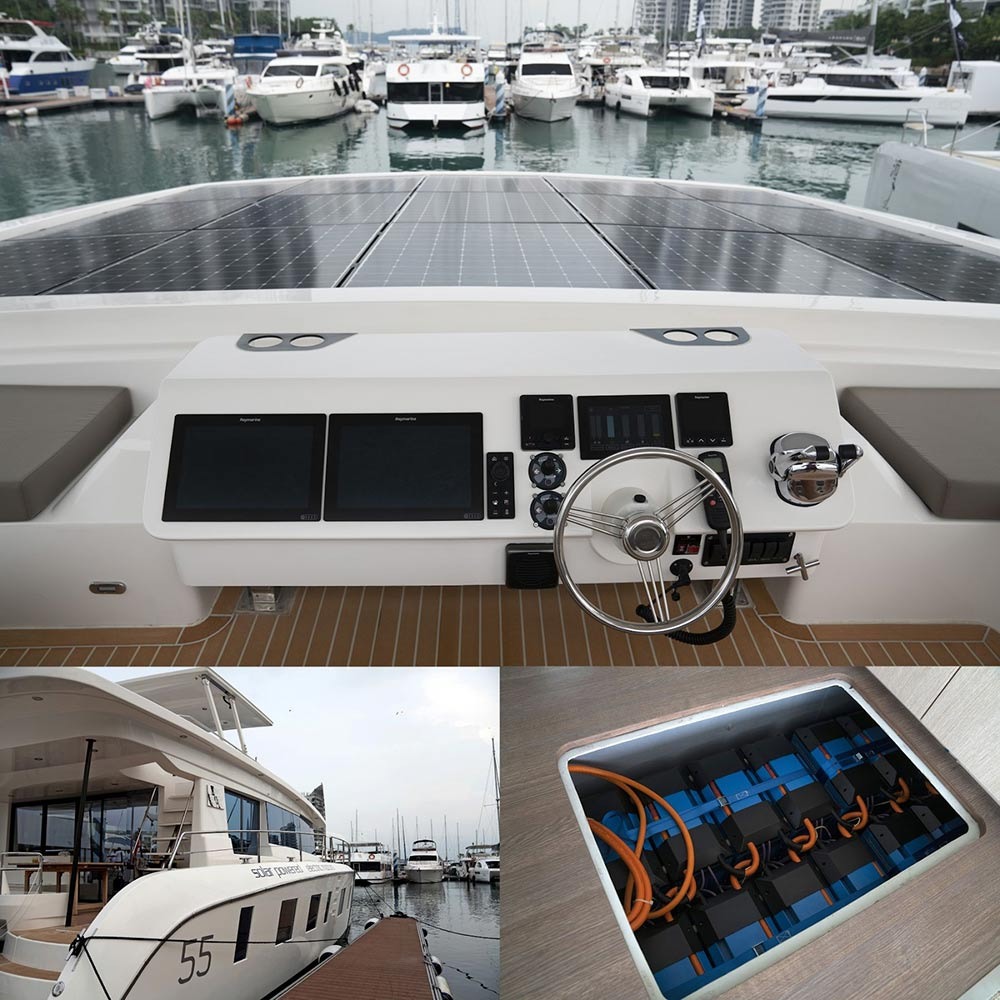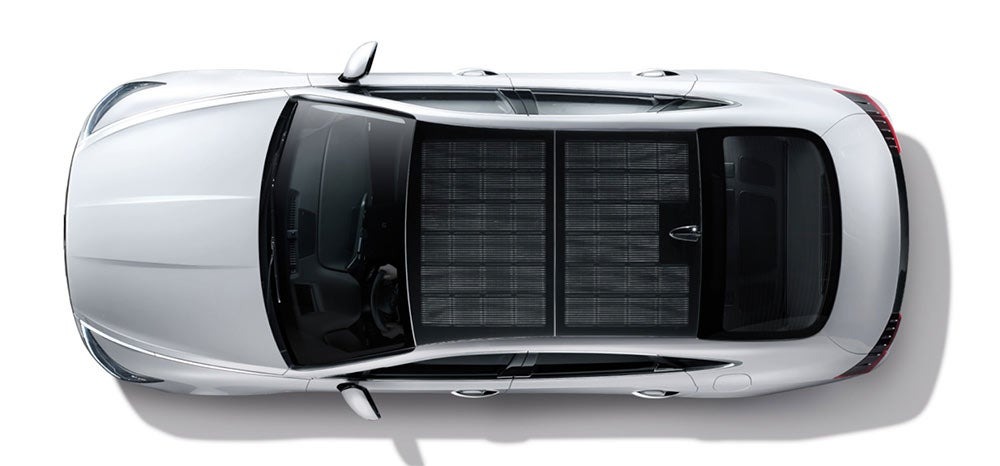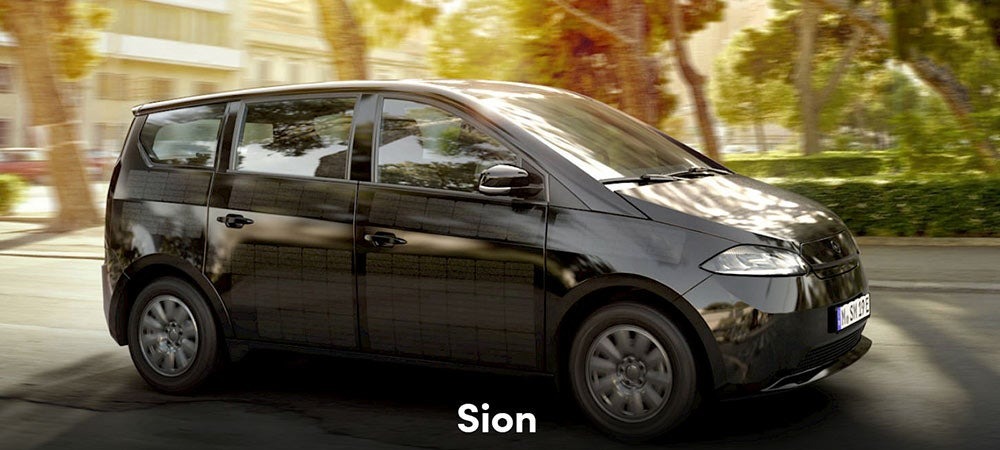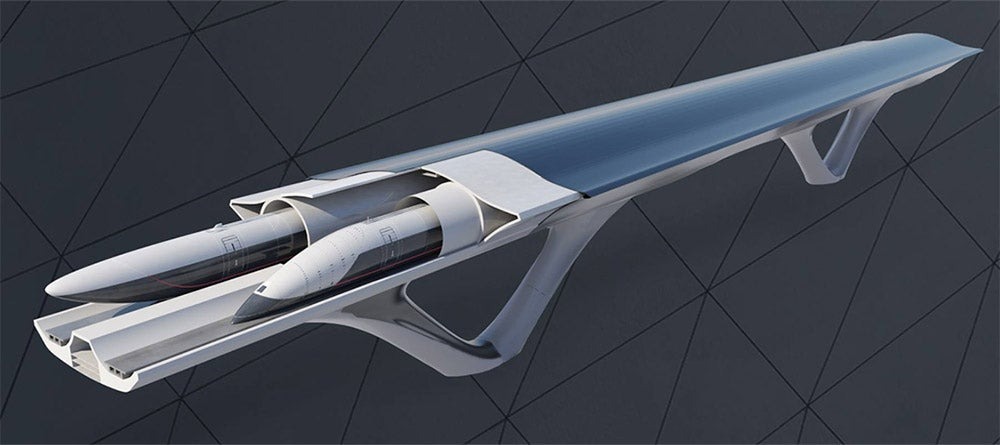Updated 1 week ago
Solar transportation: 4 solar vehicles that are making waves
Written by
Jagpreet Sandhu
Find out what solar panels cost in your area
This blog covers 4 futuristic solar transport vehicles that manage to harness the potential of the sun in new and interesting ways.
#1 Solar-powered yacht
Imagine a yacht that runs not on fuel but solely on solar power— makes no noise, emits no fumes, has unlimited miles of range, minimal vibration, and is virtually maintenance-free.
According to the manufacturer, the Silent 55 yacht has got it all, and much more:
Maintenance-free electric motor
No heat build-up
Safest marine propulsion system on the market
8-year warranty for the battery banks
25-year warranty for solar panels

Components of the Silent 55 solar-powered yacht. Image source: Bloomberg
The yacht contains 30 high-efficiency solar panels, lithium batteries, and maximum power point tracking (MPPT) solar charge regulators. The manufacturer claims that there is enough power, plus storage, for the yacht to sail all night – non-stop. It also has a 15-kVA inverter to power all the electrical appliances, including a powered aft swim platform and a 1,500-watt electric windlass.
Here's what Michael Köhler, Silent-Yachts founder and CEO has to say about it:
"What this represents to the yachtsman, among other features, is the ability to cruise for many hours at normal speed and throughout the entire day and evening at reduced speed. Silent-Yachts sets the standard for an entirely new feeling in yachting: No fuel. No maintenance. Pure solar-powered luxury."
#2 Solar electric cars
Solar electric vehicles were once thought of as a pipedream in the auto industry. However, recent technological advancements have broadened the industry’s horizons, and we’re now seeing many different brands launch cars that incorporate the use of solar.
For instance, Hyundai recently announced a new version of the solar-powered car, the Sonata Hybrid, for the North American market. Though not yet available, the model features rooftop solar panels which, Hyundai claims, boost the car's fuel efficiency, support its electric power source, and reduce carbon dioxide emissions.
It’s been noted that the solar roof won’t add more than 2 miles per day in range, but we think Hyundai deserves kudos for taking the first step in incorporating solar into a mass-produced vehicle.

Hyundai solar car with roof charging system. Image source: Hyundai
Sono Motors took the idea even further, by embedding invisible solar cells onto the doors and hood of the all-new Sion. The solar cells are hidden by a special colored coating. “The color possibilities are almost endless,” says Dr. Martin Heinrich, head of PV for Mobility at Fraunhofer ISE.
The Sion, with 248 solar cells integrated into its body and a 35 kWh battery capacity, boasts a driving range of approximately 155 miles on a single charge.

Solar-powered Sion with invisible solar cells. Image source: Sono Motors
Another company, Lightyear, announced the debut of its solar electric vehicle (EV) — Lightyear One, with the ability to drive up to 497 miles on a single charge. The company also affirms that with its fast charging capability, Lightyear One can charge up to 354 miles of energy in as little as an hour.
The market for solar-powered vehicles is not limited to these options - in fact, the industry is growing exponentially, through new designs and advanced technologies. Maybe some day we'll see solar-powered vehicles driving on solar roadways!
#3 Solar aircrafts
In 2016, the Solar Impulse 2, an aircraft powered by the sun, circumnavigated the globe — without using any fuel.
The plane, which is powered by over 17,000 solar cells mounted on its wings, crossed both the Pacific and Atlantic oceans without a drop of fuel. The plane’s solo pilot, Bertrand Piccard, reached 29,000 feet during the day and glided back to 5,000 feet at night.
This is what Piccard had to say about solar innovation:
“These technologies now can make the world much better and we have to use them, not only for the environment, but also because they are profitable and create jobs.”
After the success of Solar Impulse 2, a solar-powered HAPS (high altitude pseudo satellite), the Zephyr-S built by Airbus, completed a flight that lasted for 25 days, 23 hours, and 57 minutes. A larger version of this — the Zephyr-T — is currently under development.
Sophie Thomas, Program Head of Zephyr, explains how Zephyr aircrafts can revolutionize the ways in which humanitarian, defense, and environmental missions are executed. According to Thomas, Zephyr has the capability to alert authorities about forest fires and the speed at which they are spreading. It can also ensure that soldiers, fighting in mountainous or hilly terrain, can communicate effectively.
The company also affirms that no runway is required to launch the Zephyr airplanes — all that is needed is a large flat area and some space (approximately 20 feet) for a ground control station.
Here’s a glimpse into the future of aviation:
#4 Solar-powered 'Hyperloop' train
Back in 2013, Elon Musk unveiled the idea of the Hyperloop — an ultra high-speed transit system to significantly cut down travel times between major cities. According to him, Hyperloop will take just 30 minutes — instead of several hours — for a trip from LA to San Francisco.
Musk envisioned Hyperloop as a potential fifth mode of transportation — after cars, trains, planes, and boats — in order to carry people or freight through the use of self-propelled pods. Because the pods are built in low-pressure vacuum tubes, they avoid the lag from air resistance and are pushed at speeds greater than 700 miles per hour, providing a fast, comfortable, and efficient means of transport.
MAD Architects and Hyperloop Transportation Technologies further expanded on Musks' idea to create a new sustainable design — the Hyperloop train powered by solar panels and wind turbine forests.
The vision behind Hyperloop is impressive: offering people a way to travel long distances that is not just fast but clean— unlike traveling by airplanes, which is highly polluting.

A prototype of the Hyperloop train, powered by solar energy. Image source: CNN
The train tunnels would be outfitted with “bendable solar panel skin modules” to produce power for Hyperloop and its interactive information boards. Additional energy would come from bladeless wind turbine forests built alongside the tunnel.
It will take at least a decade for the concept to become a reality, but companies have already started to explore all the possibilities surrounding it.
Learn about other amazing solar technologies — such as floatovoltaics, solar skins, and BIPV, that are already making a difference: Which new solar panel technologies will revolutionize energy production?
Solar vehicles vs solar panels for home
The incorporation of solar into vehicle manufacturing is still relatively new. This means that most of the vehicles currently available are either very expensive, or not ready for mass market.
If you're actually looking to get an effective application of solar today that can both make efficient use of the sun's energy and save you money, think about getting rooftop solar! The calculator below will give you a tailored estimate on everything you need to know about getting solar panels for your home.
Jagpreet is a specialist in digital communication and creative writing. During her career, she has produced a wide range of content including blogs, articles, case studies, brochures, user manuals, and other creative assets. She has a keen interest in solar and envisions a bright future where all our energy comes from renewable resources. Jag has been an enthusiastic writer for more than seven years and is skilled in digital communication and cr...
Learn more about Jagpreet Sandhu